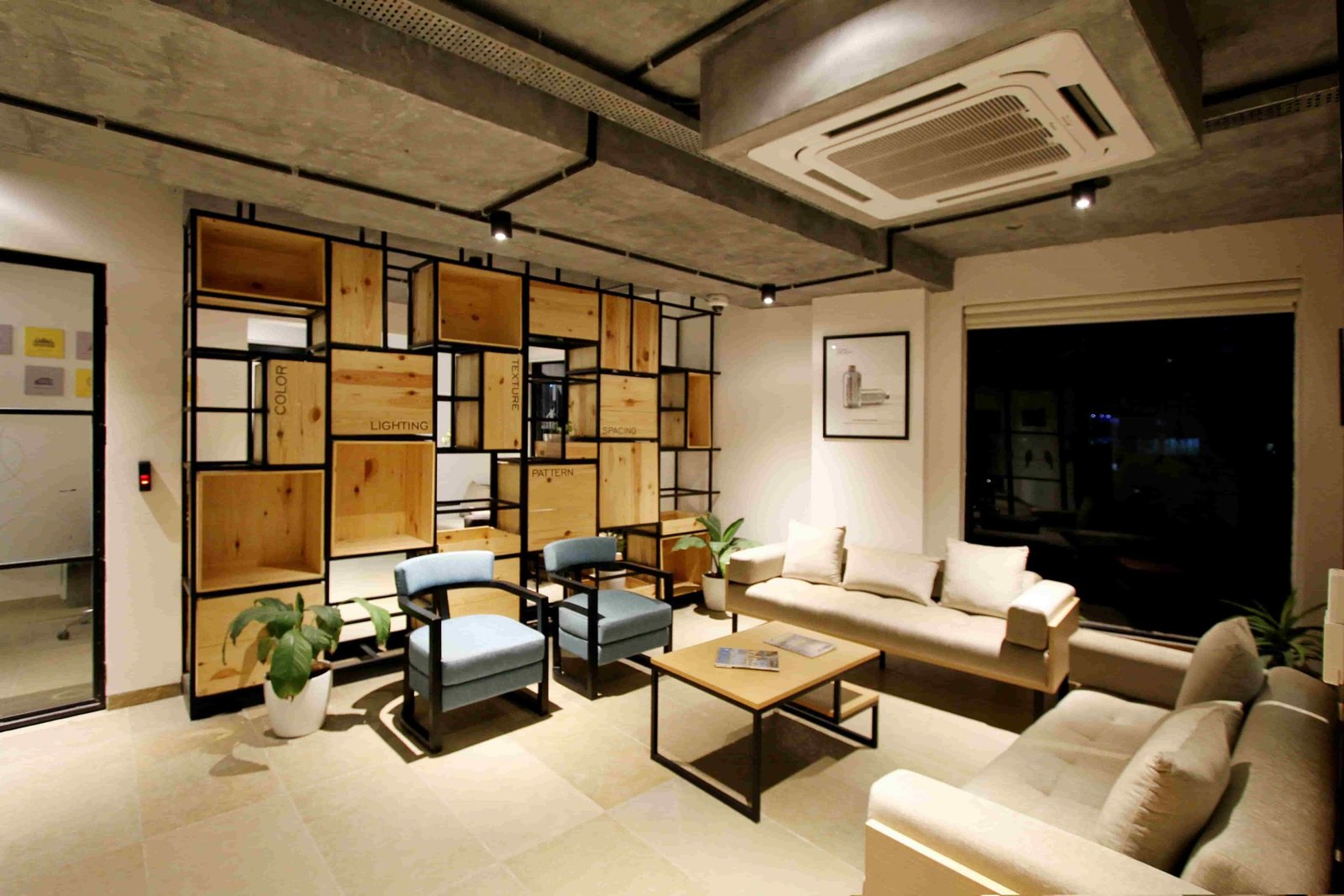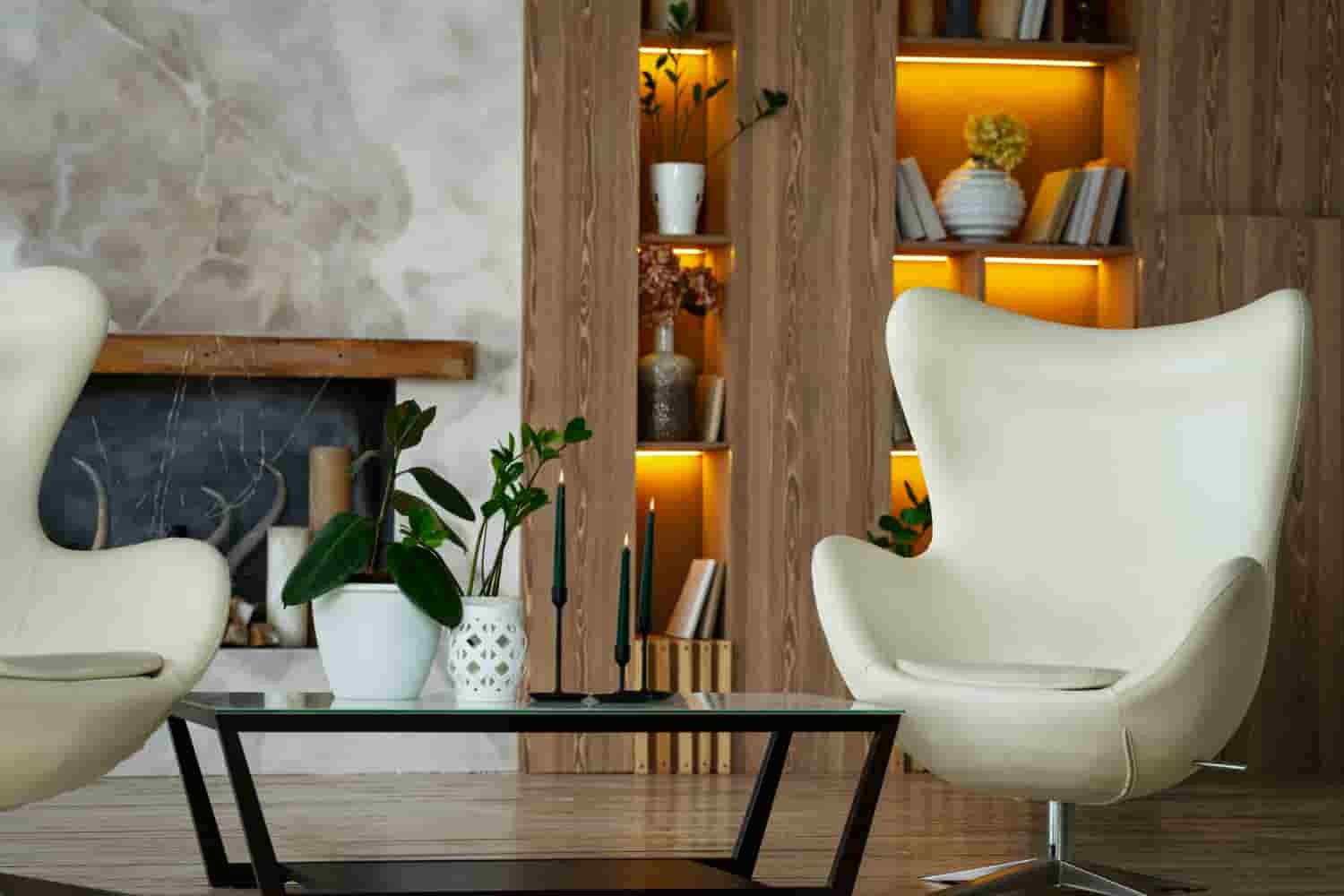The Importance of Interior Design
Interiors designing is more than just aesthetics; it’s about creating a space that reflects your personality and style while also enhancing functionality and comfort. A well-designed interior can improve your mood, increase productivity, and make your home a welcoming, enjoyable place to live. In this article, we’ll explore the elements and principles of interior design, discuss popular design styles, and offer tips to help you design your own interiors.
The Elements of Interior Design
The elements of interior design are the building blocks that come together to create a cohesive and visually appealing space. These include color, space, texture, lighting, and pattern.
Color
Color is a powerful tool in interior design, as it can evoke emotions and create a specific atmosphere. It’s essential to choose the right colors for your space, keeping in mind the room’s purpose, lighting, and your personal preferences.
Space
Space refers to the physical area of a room, including its dimensions and layout. A well-designed space makes optimal use of its size and shape, ensuring that it’s both functional and visually appealing.
Texture
Texture adds depth and character to a room, creating visual interest and enhancing the overall design. Incorporating different textures through materials, fabrics, and finishes can create a more dynamic and inviting space.
Lighting
Lighting is a crucial element of interior design, as it can greatly impact the mood and functionality of a space. A well-lit room can feel more spacious, welcoming, and comfortable, while poor lighting can make a space feel cramped and uninviting.
Pattern
Patterns can add visual interest and personality to a space. Incorporating patterns through textiles, artwork, and decorative accents can help create a cohesive and stylish design.
The Principles of Interior Design
The principles of interior design are guidelines that help designers create visually appealing and well-balanced spaces. These include balance, proportion, rhythm, emphasis, and harmony.
Balance
Balance refers to the equal distribution of visual weight within a space. This can be achieved through symmetry, asymmetry, or radial balance, ensuring that the room feels stable and harmonious.
Proportion
Proportion relates to the size and scale of objects within a space. A well-proportioned room features elements that are appropriately sized in relation to one another, creating a sense of harmony and balance.
Rhythm
Rhythm is the repetition of elements in a space, creating a sense of movement and flow. This can be achieved through the use of patterns, colors, or shapes, guiding the eye throughout the room
Emphasis
Emphasis involves creating a focal point in the room to draw the eye. This can be achieved by using a statement piece of furniture, artwork, or a unique architectural feature.
Harmony
Harmony is achieved when all elements of a room’s design work together cohesively. A harmonious room feels unified and balanced, creating a sense of calm and tranquility.
Popular Interior Design Styles
While there are many interior design styles to choose from, some have remained popular over time due to their aesthetic appeal and timeless charm.
Modern
Modern design is characterized by clean lines, simple color palettes, and the use of materials like metal, glass, and steel. It emphasizes function and simplicity, often incorporating open floor plans and large windows to let in natural light.
Minimalist
Minimalist design is a pared-down aesthetic that focuses on simplicity and functionality. It involves using a limited color palette, clean lines, and a lack of clutter to create a tranquil and serene space.
Industrial
Industrial design is inspired by old factories and industrial spaces. It features raw and unfinished materials, such as exposed brick, concrete, and metal, combined with wood and leather to create a rugged, urban look.
Traditional
Traditional design is characterized by classic details, rich color palettes, and a variety of textures and patterns. It often includes antique furniture, ornate details, and luxurious fabrics to create a comfortable and welcoming atmosphere.
Tips for Designing Your Own Interiors
Creating a beautiful interior doesn’t have to be complicated or expensive. Here are some tips to help you design your own interiors.
Determine Your Style
Before you start, it’s important to identify your personal style. Look for inspiration in magazines, online, or in the homes of friends and family. Pay attention to the colors, textures, and styles that you’re drawn to.
Start with the Basics
Begin with essential furniture pieces and build from there. Choose items that are both functional and fit your style.
Plan Your Space
Consider the layout of your space and plan accordingly. Make sure there’s enough room to move around and that the furniture arrangement is functional and visually pleasing.
Choose the Right Colors
Color can greatly influence the mood of a room. Choose colors that reflect the feel you want for your space, whether it’s calm and soothing, vibrant and energetic, or somewhere in between.
Incorporate Textures and Patterns
Adding different textures and patterns can give your space depth and visual interest. Consider incorporating these elements through rugs, pillows, artwork, and other decorative accents.
Pay Attention to Lighting
Good lighting can make a space feel more inviting and comfortable. Consider both natural and artificial light sources, and use a combination of ambient, task, and accent lighting for the best results.
Conclusion
Designing interiors is a creative process that involves understanding and applying the elements and principles of design, identifying your personal style, and making choices that reflect your tastes and lifestyle. With the right approach, you can create a space that is both beautiful and functional, a place where you truly feel at home.
FAQs
1. What’s the first step in designing interiors?
The first step is to determine your style and understand what you want from your space. Collect inspiration, make a plan, and then start with the basics.
2. How important is color in interior design?
Color is extremely important in interior design. It can set the mood, create a theme, and tie the room together.
3. Can I mix different design styles?
Absolutely! Mixing styles can create a unique and personalized space. Just make sure there’s some element that ties everything together, like a color palette or a particular material.
4. How can I make a smallspace look larger?
Using light colors, incorporating mirrors to reflect light, and selecting furniture with a smaller footprint can make a small space look larger. Also, decluttering and organizing your space can greatly enhance the perception of size.
5. What is the role of texture in interiors designing?
Texture adds depth and interest to a room. It can influence mood, perception, and visual weight. Using a variety of textures can make a space feel more inviting and comfortable.








